🔐 User-Specific Authorization in SAP SD Module: Ensuring Secure and Controlled Access
- Yunus Emre DOĞAN
- Jul 28
- 2 min read
Updated: Aug 29
Security and authorization management are critical components across all SAP modules, and the SD (Sales and Distribution) module is no exception.
Key business operations such as sales order entry, billing, and access to pricing conditions should be restricted to only those users who are responsible for them. Therefore, implementing user-specific authorizations tailored to business requirements is essential.

In this blog post, we will explore how to create custom authorizations for specific users in the SAP SD module, the scenarios in which such authorizations are necessary, and how to effectively manage the process.
Building the right authorization strategy not only enhances system security but also ensures that users perform only the tasks relevant to their roles.
⚙️ How to Configure Custom Authorizations in SAP SD (Step by Step) 🔧
Start by navigating to transaction code PFCG to access the Role Maintenance screen. Enter a name for the new role in the input field, then click the "Create" button to begin the role creation process.
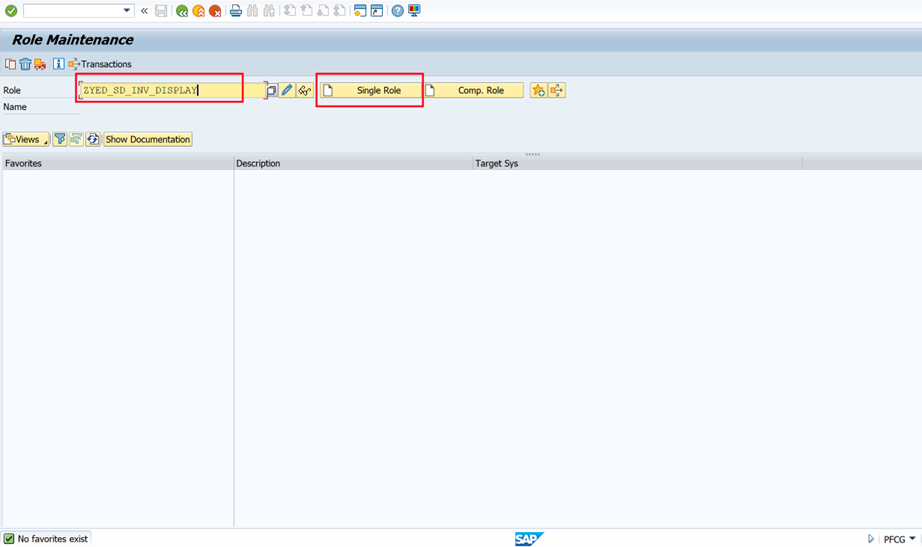
In the displayed screen, a description related to the newly created role is entered
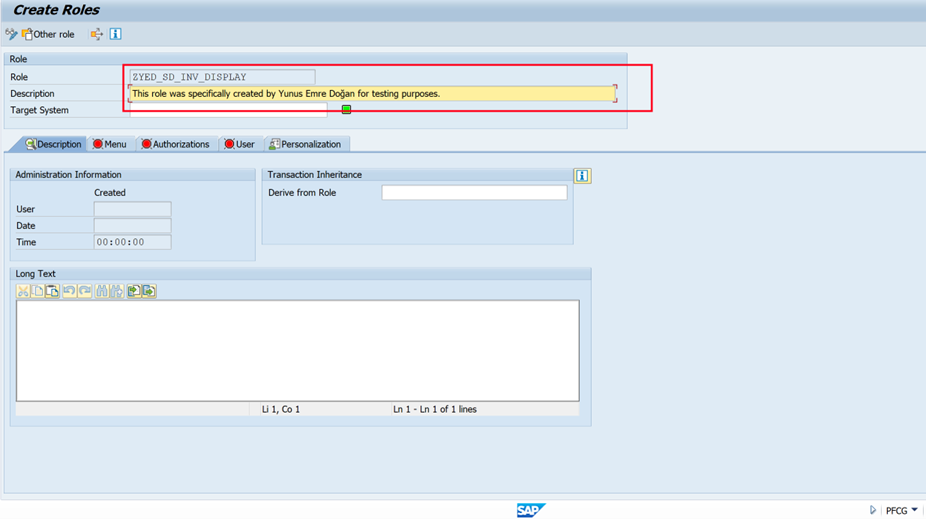
Navigate to the Menu tab, and follow the path outlined below within this section.

In the displayed screen, the user’s authorized role access is selected. In this scenario, only display authorization is assigned for the order screen.

In the next step, navigate to the Authorization tab and click the button next to the Profile Name field. Upon clicking, the related fields will be automatically populated. Alternatively, you may manually fill these fields following the naming conventions if preferred.
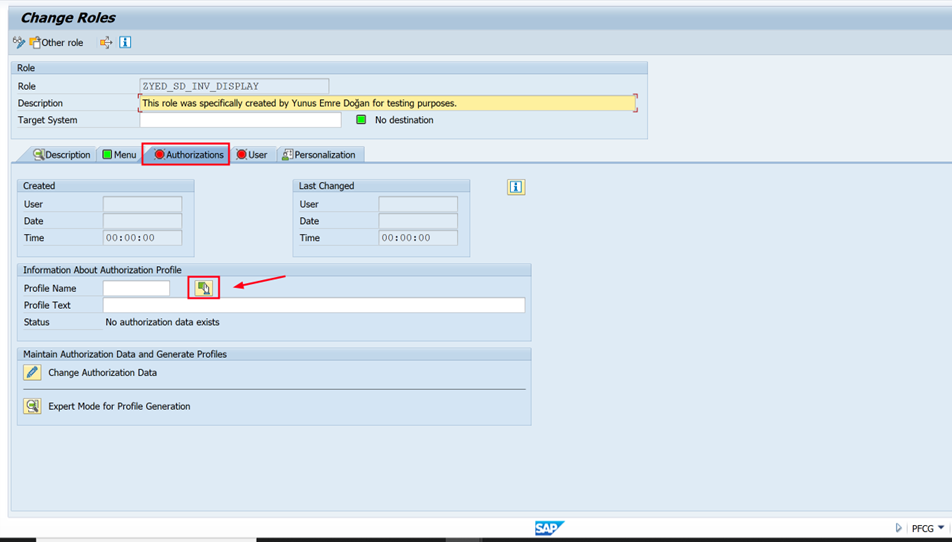

In the next step, to determine the scenarios in which this authorization should be assigned, follow the path shown below.
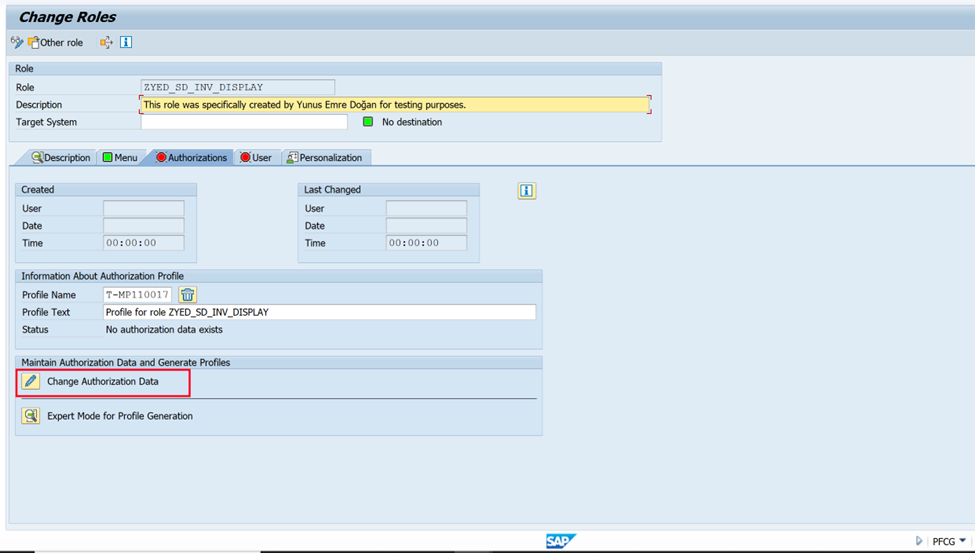
In this scenario, we want the created authorization to allow viewing only SD invoices generated with the ZYUN invoice type. Therefore, the fields should be filled as specified below.

The created authorization is assigned to the user.

In transaction code SU01, after verifying the authorization assigned to the user, activate the authorization and click the Save button.

The authorization of the created user can be verified. First, log in with the TEST user and attempt to display invoices created with both the ZYUN and non-ZYUN invoice types on the VA03 screen.
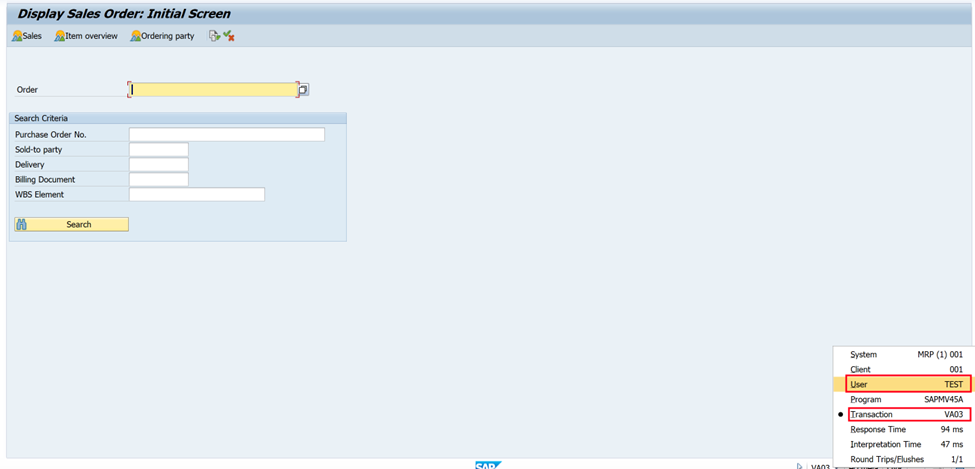
To validate this test, we will use invoices numbered 461 and 463, which were created with the ZYUN and ZGER order types in the VBAK table.

When I attempt to access the sales order 461, I am able to successfully view its details.

However, when I try to display the sales order 463, I receive an error, as its order type is ZGER, not ZYUN
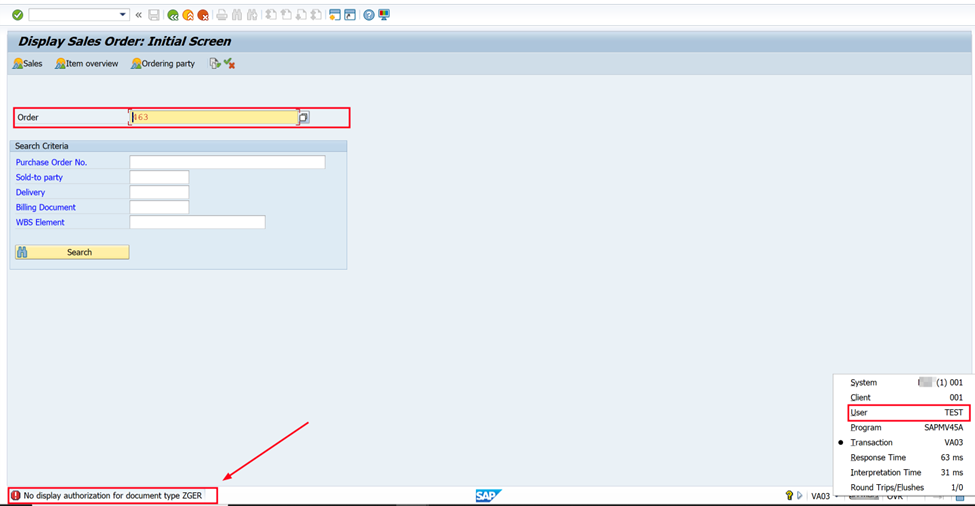
Thank you for taking the time to read my blog post. I hope you found it useful and insightful. If you would like to learn more about SAP, feel free to follow me on LinkedIn.









Comments